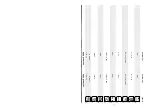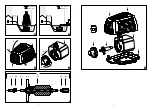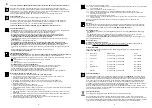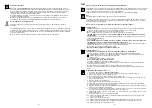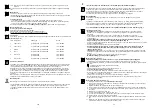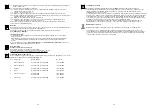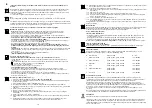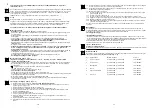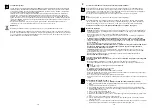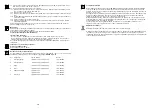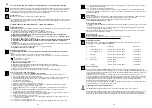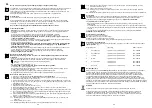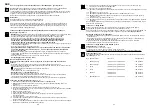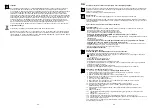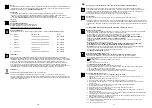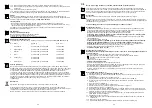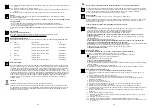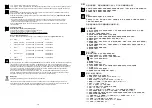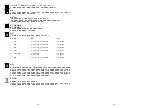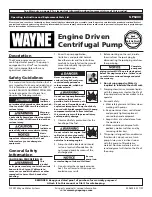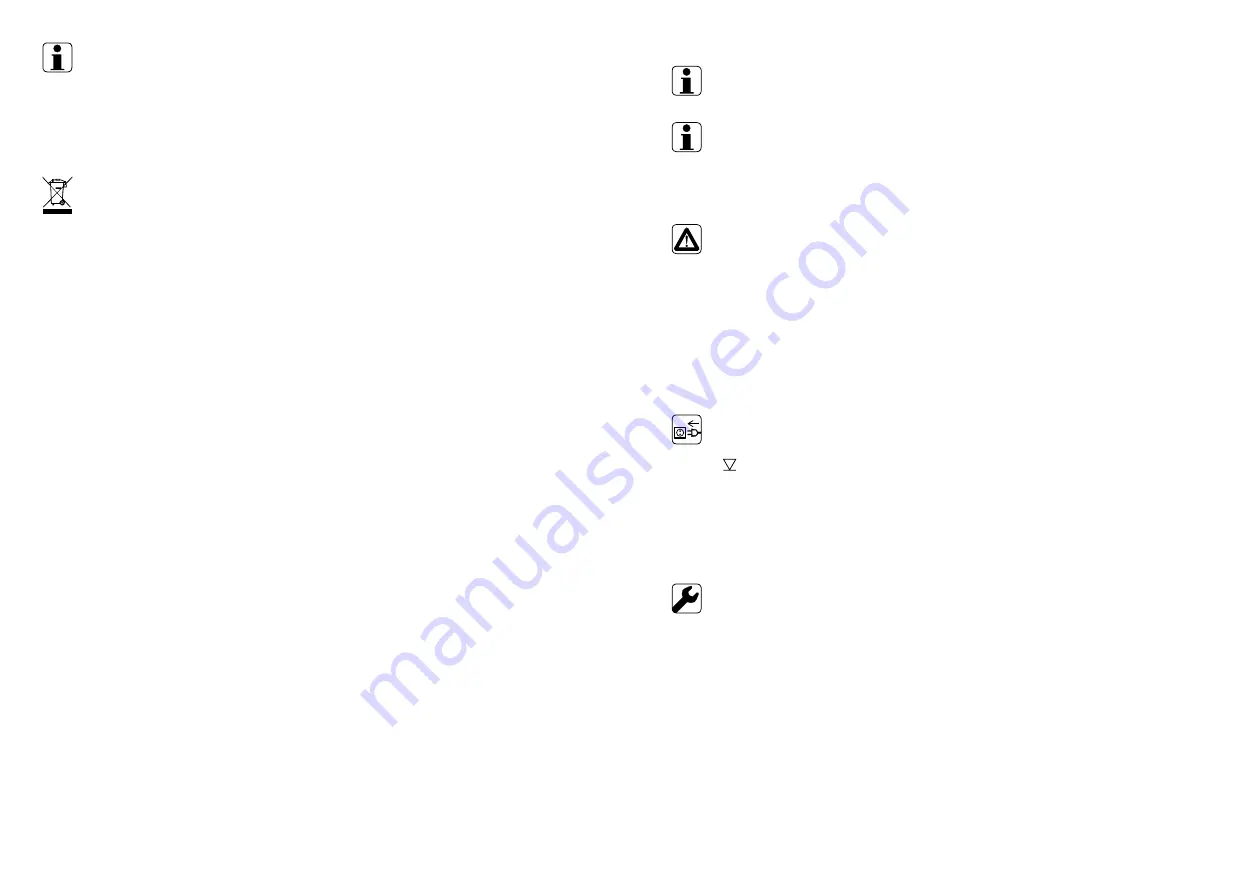
8
9
Garantievoorwaarden
Op de pomp wordt
36 maanden
garantie verleend welke ingaat op het moment van aankoop. U dient
hiervoor de aankoopbon als bewijs te bewaren. Schade aan de pomp binnen de garantietermijn, ontstaan
door een produktie en/of materiaalfout, wordt kosteloos hersteld. Schade die is ontstaan door; inbouwen
bedieningsfouten. Kalkaanslag, te weinig onderhoud, bevriezing, normale slijtage of ondeskundige
reparaties, vallen niet onder deze garantieaanspraak.
Bij veranderingen aan de pomp, zoals het inkorten van de stroomkabel of het afknippen van de stekker,
vervalt de aanspraak op garantie.
Meßner is niet aansprakelijk voor de gevolgschade die is ontstaan door het uitvallen of het verkeerd
gebruiken van de pomp. Stuur bij reparatie altijd uw garantieformulier en aankoopbon mee.
Het verwijderen en de afvalopslag van
Elektrische apparaten die in het huishouden zijn gebruikt, dienen volgens EU-richtlijnen verwijderd
te worden.
Het produkt mag niet samen met het andere normale afval verwijderd worden, maar dient apart verzameld
te worden. Het is gescheiden afval.Het is uw eigen verantwoordelijkheid dat het apparaat naar een speciaal
daarvoor bestemde afvalplaats wordt gebracht om op een milieuvriendelijkere manier te worden verwijderd
of te worden hergebruikt.
Meer informatie over lokale afvalverzamelpunten vindt u bij de gemeente in uw gebied.
Please read these instructions thoroughly, before using the pump!
This appliance is not suitable for use by persons (including children) with limited physical, sensory or mental
capabilities or lacking experience and/or knowledge, except if they are supervised by a person responsible
for their safety or have been instructed in the use of the appliance.
Children should be supervised in order to make sure that they do not play with the appliance.
Use
Centrifugal pump for submersible usage with resin encapsulated motor.
The pumps are designed for use in water, for instance: swimming pond, swimming pool, garden pond, fish
pond, fountain, terrace fountain, indoor fountain, for operating filters systems, watercourses etc. as well as
for aerating and recirculating water.
Please refer to the type plate for technical specifications or the table on page 1.
Safety measures
-
Caution!
It may only be used in garden ponds and in their protection area if the electrical installations
have been set up to comply with the code‘s requirements. Please contact an electrician.
- Before use: Check whether mains connection and plug are intact.
- Mains voltage and type of current have to correspond to the data on the type plate.
-
The pump has to be connected to a regular safety plug socket through a residual current device
(RCD, 30 mA).
- The connection box should be located in a water-protected area. It should be at least 2 m away from the
edge of the pond
(see fig.1)
.
- Keep the plug dry!
-
Pull out mains plug before starting to work on the pump, fountain or pond. It is not allowed to run
the pump when people are inside the water (disconnect the pump)!
-
Important!
If the mains connection or the motor housing is damaged, the pump cannot be used anymore.
It cannot be repaired since the connection is cast into the motor housing.
- Never hang up or transport the pump by the cable!
-
Operate the pump only when it is immersed in water!
Start-up (see fig.1)
Important! Do not let the pump run dry. This could cause damage to the appliance.
- Immerse the pump completely in your pond. This causes the pump body to be filled with water.
- A minimum water depth of 20 cm is required for underwater operation to avoid the pump taking in air.
- The maximum depth for submerged operation of the
2 m
pump is 2 m!
- The water temperature should not exceed 35°C.
-
Do not let the pump freeze in the wintertime.
- The pump is switched on by putting the plug in the socket.
- To prevent the pump becoming unnecessarily dirty, place it above the mud in your pond, in a firm and
horizontal position (on a brick)!
- A range of accessories may be fitted onto the threaded connection of the pump.
- Running in conjunction with fountain jets, the pump should be positioned firmly and horizontally (on a
brick).
Dismantling / Assembly (see fig. 2 - 5)
1. Follow the safety measures.
Disconnect the pump!
2. Push in the two brackets on the front of the pump, push the top shell (1) up and remove it.
3. Lift the entire pump (8) out of the bottom shell (2).
4. Twist the intake lid (6) clockwise and pull it out of the pump (8).
5. The front bearing support (4.5) and an axial bearing washer (4.4) are situated in the inlet lid (6) or on
the axle (4.3) respectively.
6. Pull the rotor (4) out of the pump (8).
7. The complete rotor (4) can be rotated on the shaft (4.3).
8. The flywheel (4.2) and the magnet (4.1) can also be rotated against one another at a certain angle.
9. Thoroughly pull the axle (4.3) out of the pump (8).
10. Push the rear bearing support (4.5) including the axial bearing washer (4.4) out of the pump; you may
find a pen to be helpful to accomplish this.
11. Insert this pen in the small bore at the pump‘s rear side (8) and use it in order to push the rear bearing
support (4.5) including the axial bearing washer (4.4) out of the pump.
12. Clean all components - please use clear water only - so that they allow to be easily moved. Do not use
sharp-edged objects.
13. Proceed as follows in order to reassemble the pump:
13.1. Put the rear bearing support (4.5) including the axial bearing washer (4.4) onto the axle (4.3) and
insert it in the pump (8).
13.2. Put the rotor (4) onto the axle (4.3).
13.3. Put the front bearing support (4.5) including the axial bearing washer (4.4) onto the axle (4.3).
13.4. Twist the intake lid (6), insert it into the pump (8) and turn it counter-clockwise up to its stop.
13.5. Place the pump (8) into the bottom shell (2).
GB


